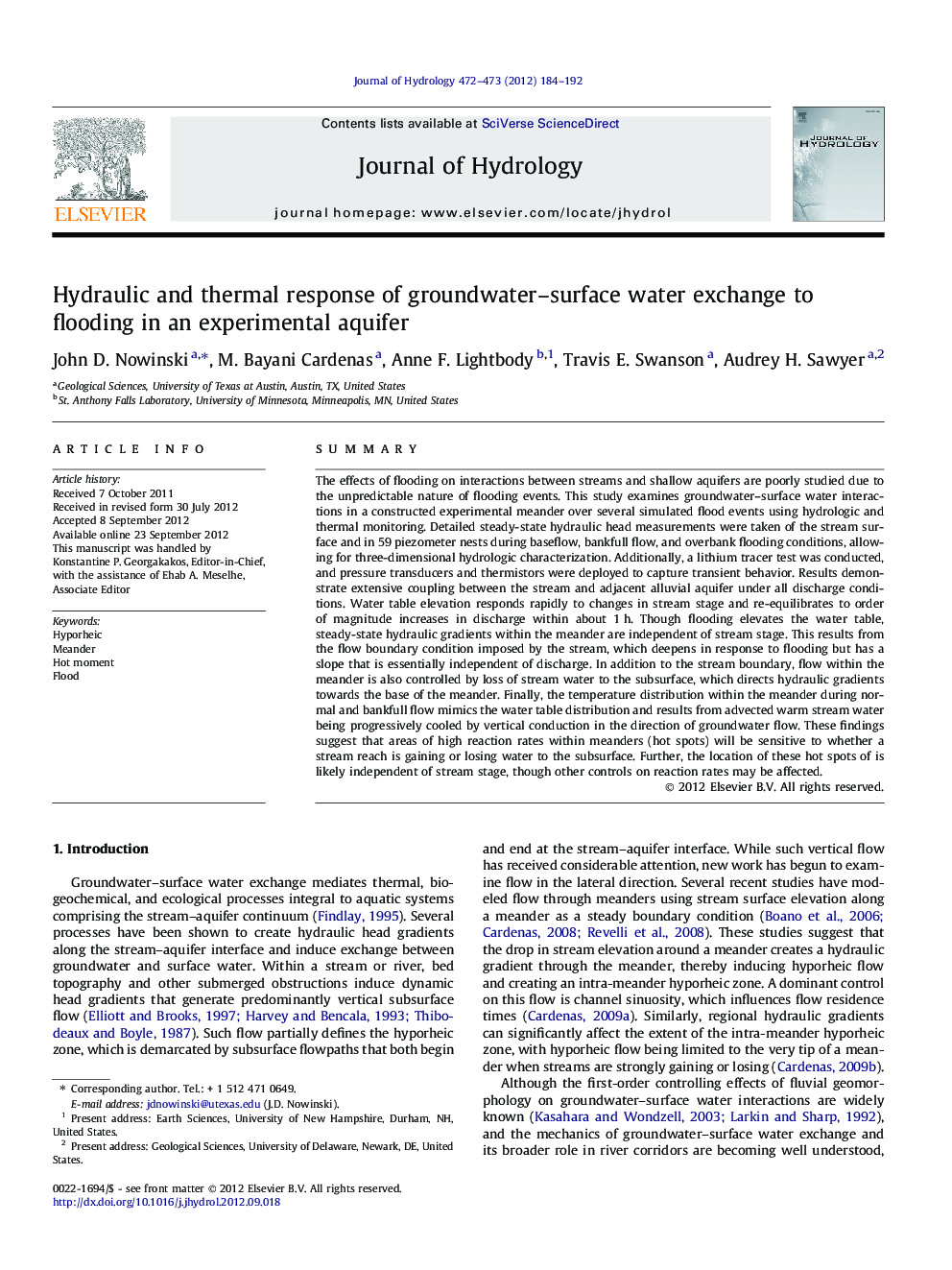| کد مقاله | کد نشریه | سال انتشار | مقاله انگلیسی | نسخه تمام متن |
|---|---|---|---|---|
| 4576509 | 1629975 | 2012 | 9 صفحه PDF | دانلود رایگان |

SummaryThe effects of flooding on interactions between streams and shallow aquifers are poorly studied due to the unpredictable nature of flooding events. This study examines groundwater–surface water interactions in a constructed experimental meander over several simulated flood events using hydrologic and thermal monitoring. Detailed steady-state hydraulic head measurements were taken of the stream surface and in 59 piezometer nests during baseflow, bankfull flow, and overbank flooding conditions, allowing for three-dimensional hydrologic characterization. Additionally, a lithium tracer test was conducted, and pressure transducers and thermistors were deployed to capture transient behavior. Results demonstrate extensive coupling between the stream and adjacent alluvial aquifer under all discharge conditions. Water table elevation responds rapidly to changes in stream stage and re-equilibrates to order of magnitude increases in discharge within about 1 h. Though flooding elevates the water table, steady-state hydraulic gradients within the meander are independent of stream stage. This results from the flow boundary condition imposed by the stream, which deepens in response to flooding but has a slope that is essentially independent of discharge. In addition to the stream boundary, flow within the meander is also controlled by loss of stream water to the subsurface, which directs hydraulic gradients towards the base of the meander. Finally, the temperature distribution within the meander during normal and bankfull flow mimics the water table distribution and results from advected warm stream water being progressively cooled by vertical conduction in the direction of groundwater flow. These findings suggest that areas of high reaction rates within meanders (hot spots) will be sensitive to whether a stream reach is gaining or losing water to the subsurface. Further, the location of these hot spots of is likely independent of stream stage, though other controls on reaction rates may be affected.
► This study examines hyporheic processes in an experimental meander during flooding.
► Intra-meander flow is highly sensitive to gaining and losing stream conditions.
► Groundwater flux is invariant of stream stage except at onset and end of flooding.
► Vertical conduction within the meander cools water in the direction of flow.
► Flooding alters shallow but not deep groundwater temperatures.
Journal: Journal of Hydrology - Volumes 472–473, 23 November 2012, Pages 184–192